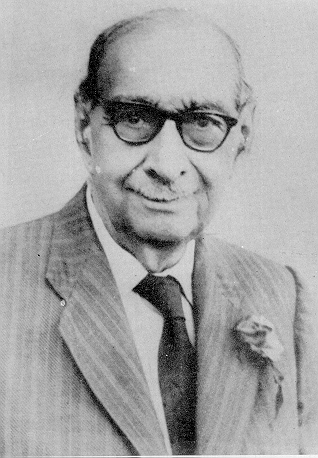

Born on 23rd October, 1883, in Surat, Wadia had his early education in the place of his birth and later in Baroda, where he took his degree in Natural Sciences. Geology attracted him most. But in his days, geology was taught as a special subject only in the University of Calcutta and Madras and so Wadia had to study geology all by himself, thereby becoming a self-aught geologist. After graduating from Baroda, he joined the Prince of Wales College, in 1907, where he taught geology for 14 years. He joined the Geological Survey of India in 1931. As an officer of the Geological Survey of India, Wadia worked mostly in the Kashmir Hazara area of the North-Western Himalayas and his paper on Syntaxis of the North-Western Himalayan region published in 1931 is considered as a monumental work and the most fundamental contribution to our knowledge of Himalayan tectonics.
To an active scientific worker like Wadia, the term retirement had no meaning and in fact. retirement form service in the year 1938 marked the beginning of a really active carrier for him. Since that date, his contributions to the subject of geology and allied branches of knowledge are to be considered most invaluable. Wadia was successively Government Mineralogist in Ceylone, the first Director of the Indian Bureau of Mines, Geological Advisor to the Government of India, Department of Atomic Energy, a position which he held till his death. In the latter position, Wadia was the Head of the Atomic Minerals Division.
Wadia held several high and distinguished positions in Indian Science, such as President, Indian Science Congress, President of the National Institute of Sciences in India and the President of the Geological Mining and Metallurgical Society of India. He presided over the 12th session of the International Geological Congress held in New Delhi in December 1964 and was the Leader of the Indian Delegation to the 13th session of the International Geological Congress held in Prague in August-September 1968. He was also a Member of the Board of Scientific and Industrial Research and the Governing Body of the Council of Scientific & Industrial Research (CSIR) for several years.
A Fellow of the Royal Society, London, Wadia was also recipient of Back Award of the Royal Geographical Society in 1934 and the Lyall Medal from the Geological Society, London, in 1943, all in recognition of his contributions to Indian Geology. The Government of India honoured him with the award of "Padma Bhushan" in 1958 and in the year 1963, he was made a National Professor. He has published several scientific papers in Mineralogy and Structural Geology and was the aithor of the widely read book "Geology of India", first published in 1916.
As a Chairman of the Indian National Committee on Oceanic Research (INCOR), Professor Wadia was, indeed, the most effective sustaining force behind the Indian participation in the International Indian Ocean Expedition (IIOE), which led to organized scientific activities in the field of ocean research in Indian and which laid the foundation to the setting of the National Institute of Oceanography as one of the National Laboratories unde the Council of Scientific & Industrial Research. His great zeal and enthusiasm for the "young, fascinating science" as he used to call oceanography, was almost infective and his eagerness to see that oceanography finds its proper place in the scientific map of India will always be remembered.
In his death on 15th June 1969, India has lost a geart son and a dedicated scientist but, more than that, Indian Oceanography has lost, its great benefactor and patron during its formative years.